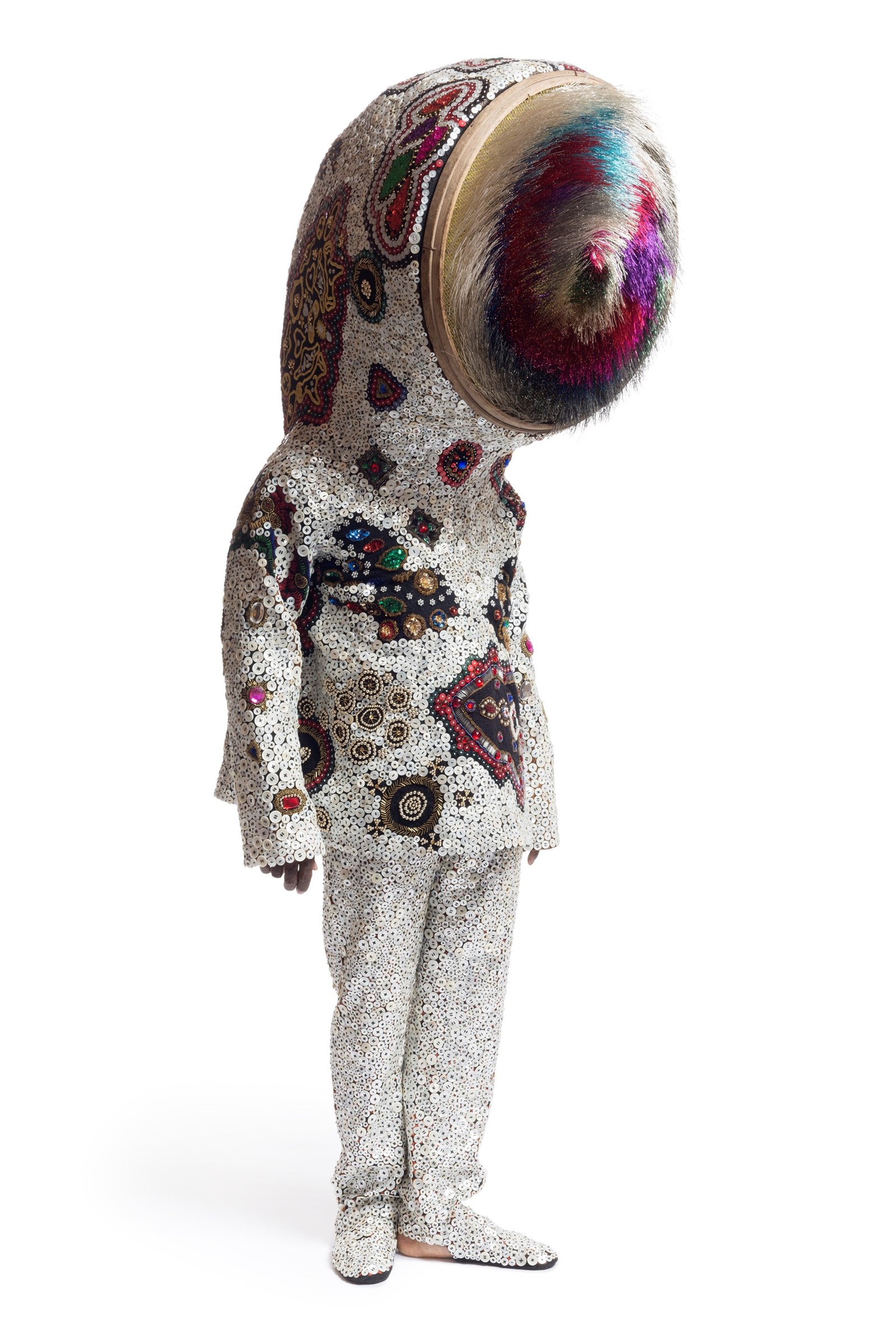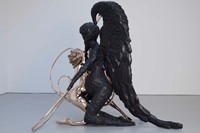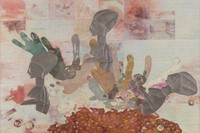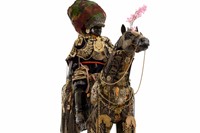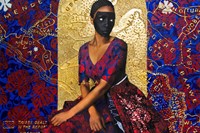In the Black Fantastic, the new exhibition at the Hayward Gallery, presents ways of seeing, inhabiting and re-imagining the world through the eyes of 11 contemporary Black artists. Curated by Ekow Eshun, works by trailblazing artists like Kara Walker, Chris Ofili and Wangechi Mutu are on show alongside art by rising stars including Tabita Rezaire and Sedrick Chisom. Each artist in the show interprets the everyday realities of Blackness in a mode that is deemed fantastical, whether through engagement with literature and world-building, the consideration of mythology and colonialism, or the response to canons of western art history. With media ranging from animation and film to painting, sculpture and installation, In the Black Fantastic takes the viewer on a journey that begins with the work of Chicago-based artist, Nick Cave.
Four of Cave’s iconic Soundsuits – wearable sculptures made of a host of dazzling found objects like buttons, sequins, artificial flowers and stuffed animals – are on show. They resemble the masquerades of West African cultures, such as egúngún of Yorubaland, Nigeria, but in the context of Cave’s work, they are rooted in an event more sinister than their vibrant appearance suggests. Cave’s first ever Soundsuit, made in 1991, was a response to the beating of Rodney King by members of the LAPD, while the most recent suit included in the show was made 30 years later in response to the murder of George Floyd – yet another act of police brutality against an African-American man.
Cave explains, “I go back to this question of ‘What do we do to protect our spirits?’ The one thing that I know that cannot be taken from us is dreaming.” The Soundsuits act as both cocoon and armour, eliminating the race, gender, and all other physical attributes of the person within it in a manner that is both spectacular and otherworldly.
Eshun conceived of In the Black Fantastic well before the murder of George Floyd and the subsequent resurgence of the Black Lives Matter movement in 2020 – but, despite the times, Eshun explains that this conversation has been going on for centuries, with generations of Black artists using fantasy and dreaming as a way to rise above an everyday, racialised reality. Cave’s new installation, Chain Reaction, speaks to this action; a curtain of repeated forearms are linked together by their fingertips, spanning the height of the gallery to represent a collective rising up against forms of oppression.
In the following conversation, Eshun and Cave discuss In the Black Fantastic as a space that is frightening, harsh and painful, while also being a space of optimism, hope and dreaming.
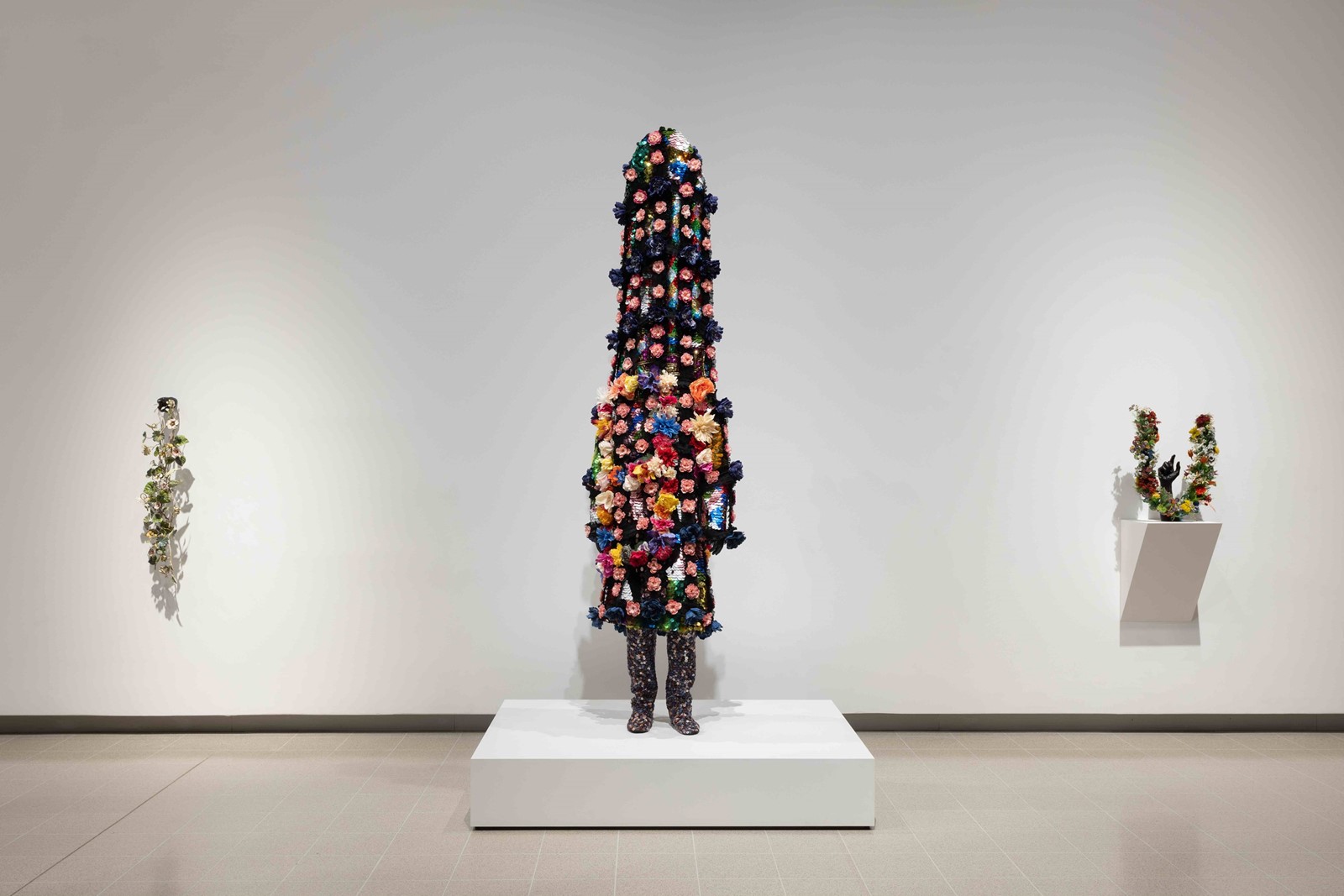
Alayo Akinkugbe: Ekow, you’ve described how the artists in this show all present “new ways of seeing, new forms of possibility and new ways of being in the world for Black people”. They all depart from an awareness that ‘race itself is a fiction’, yet it affects how we all live our lives. How is this idea of the ‘Black Fantastic’ manifested in Nick Cave’s work?
Nick Cave: When I think about the ‘Black Fantastic’, I go back to this question of, ‘What do we do to protect our spirits?’ The one thing that I know that cannot be taken from us is dreaming. We have always dreamt of what we strive to get to. It’s something that is contained, concealed, and private. We always have that one element within ourselves that we hold on to, for dear life, because that is the one thing that we use in order to move ourselves into a space of possibility.
Ekow Eshun: That’s a great way to describe it. Obviously, one of the things that makes your Soundsuits so magical, so, fantastical as works, is that they’re not about a retreat or an escape from reality. They’re an assertion of interiority as a place of richness and possibility. They strike such a chord because you look at them and understand that they aren’t decorative, they are assertions of space, and of being and dreaming, as you say.
“The one thing that I know that cannot be taken from us is dreaming. We have always dreamt of what we strive to get to” – Nick Cave
NC: They are a pushback on the constant assault. We always have to come up with ways to position ourselves and armour ourselves in order to navigate ourselves.
EE: Your artworks invite and insist upon further inquiry. The more you engage with them, the more they give you back the truth. That’s one of the ways that we can get through because, as you say, the assault is absolutely real. It’s physical and psychological. It’s every single day.
NC: I was telling someone recently that even if I go out to wave down a cab, I am thinking about whether or not I’m going to get one right away. So, psychologically, I’m already putting myself in this state of mind of what is possible.
EE: If I had an ambition with the show, it was to create the space that people could be within. It’s called In the Black Fantastic. You enter the space, you see the world through the eyes of one artist, and then another artist, and yet further artists. Every single one of these spaces privileges a Black gaze and is about what our dreaming looks like.
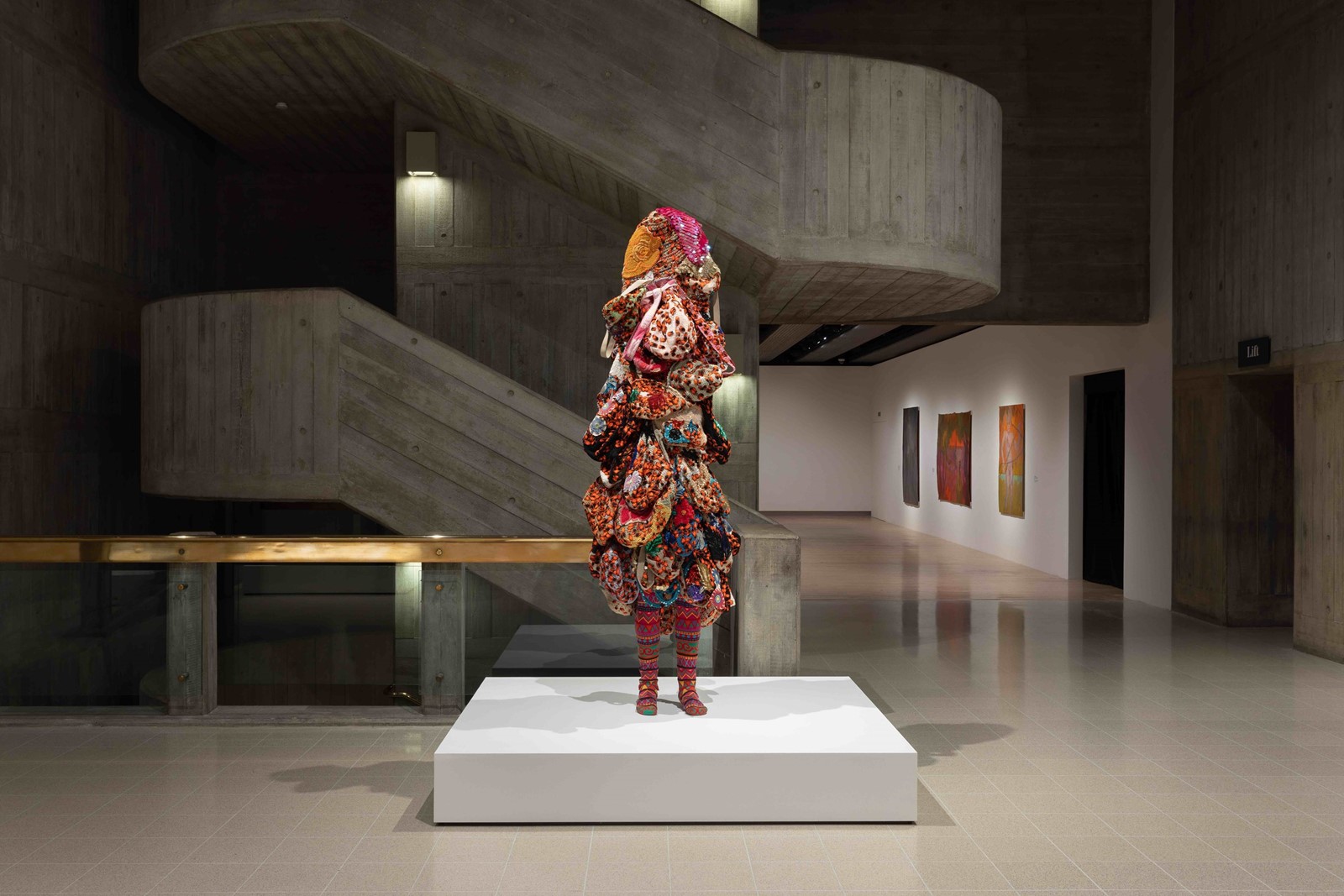
NC: And the fact that you’ve opened the show up with Chain Reaction! At the end of the day, when I think about this show, we are all linked together.
EE: When I look at that piece, Chain Reaction, it has this sense of reaching up, but I’m always struck by the precariousness of the hand hold between these arm pieces. They’re holding on by their fingertips and some of these arms have fallen into the ground. It’s an extraordinary piece. And you can see people walk into the Hayward Gallery and they take a breath, and stop to get over the threshold.
AA: Ekow, what was it about Nick’s work that compelled you to put it in the first room of the show? It’s had a huge impact on visitors.
EE: I think it’s the capacity for the work to speak so patiently and eloquently about all sorts of sorrow and beauty simultaneously. We walk through the doors of the exhibition, and we’re already somewhere that’s removed from where we were. We’re in a space where we can anticipate encounters that are exciting and exhilarating. I started the show with these works because they took my breath away, and I think they do that with other people.
NC: When I think about Chain Reaction, it’s about us being joined together in unity and in the struggle. Sometimes that joining together appears to be fragile, but we do not disconnect. In the Black Fantastic is the town hall. It’s really bringing people into that space and saying: ‘Let’s have a meeting with the visual as a starting point.’
EE: I love this idea of a town hall. There are a bunch of people who’ve been back to the show, two, three or more times, because they just want to be around the artworks and they want to be in the space.
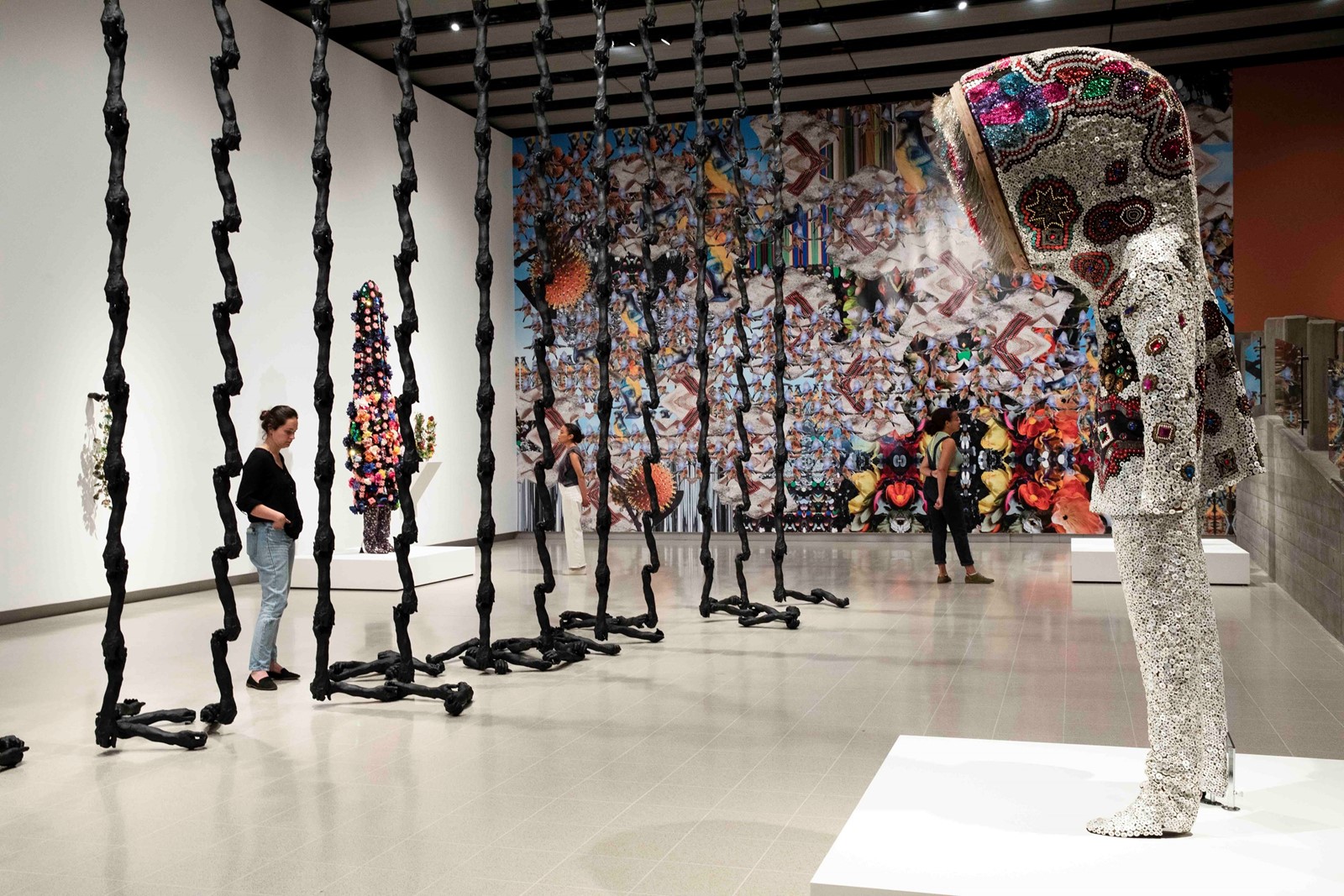
AA: The newest Soundsuit in the exhibition was made in response to the murder of George Floyd. Nick, you’ve made over 500 Soundsuits, and the first in the series was in response to the beating of Rodney King by the LAPD in 1991. Witnessing the aftermath of yet another sickening act of police brutality, nearly 30 years later, must really put things into perspective.
NC: The interesting thing that happened is that I had this awakening moment where it all became very clear to me that my work, up to that moment, had always been in response to. At that moment, everything shifted. I realised that for the last three and a half decades, I have been doing work in response to injustice that has been based in racism and inequality. All of a sudden, I thought, ‘no more.’
When something of this sort happens, I will insert that moment into the work at that given time. But I have other ways in which I want to think about my practice. It has opened up this space for me to think very differently. However, I assure you that any confrontation, any conflict will be inserted into the work at any given moment. I’m very much about this whole new projection, but with [my] eyes wide open to a moment of disruption.
“What happens when you look through the eyes of all the artists in the show? You recognise the world is complex and beautiful and really strange and historically freighted” – Ekow Eshun
AA: What does this tell us about the timeliness of In the Black Fantastic, Ekow, which I believe you had already conceived of before the murder of George Floyd and subsequent resurgence of the Black Lives Matter movement?
EE: I’d first conceived of the show about four years ago. So yes, before the recent upsurge. Artists have been making this kind of work for years upon years and I wanted to create a space of opportunities for people to catch up with that. But also, to recognise that we can look at each of these artists individually and their work is powerful and moving. But, when we look at them collectively, there’s a conversation in one form or another that is taking place.
I could have done the show four years ago or four years hence. It remains timely because the conditions under which these artists are working have an ongoing history and dialogue of oppression. The other thing that remains the same, as Nick says, is that artists will always find a way to speak to possibility, to dreaming, to ambition, wonder, desire, beauty, and any of these criteria across visual art, music and literature. These are the ways we’ve got through.
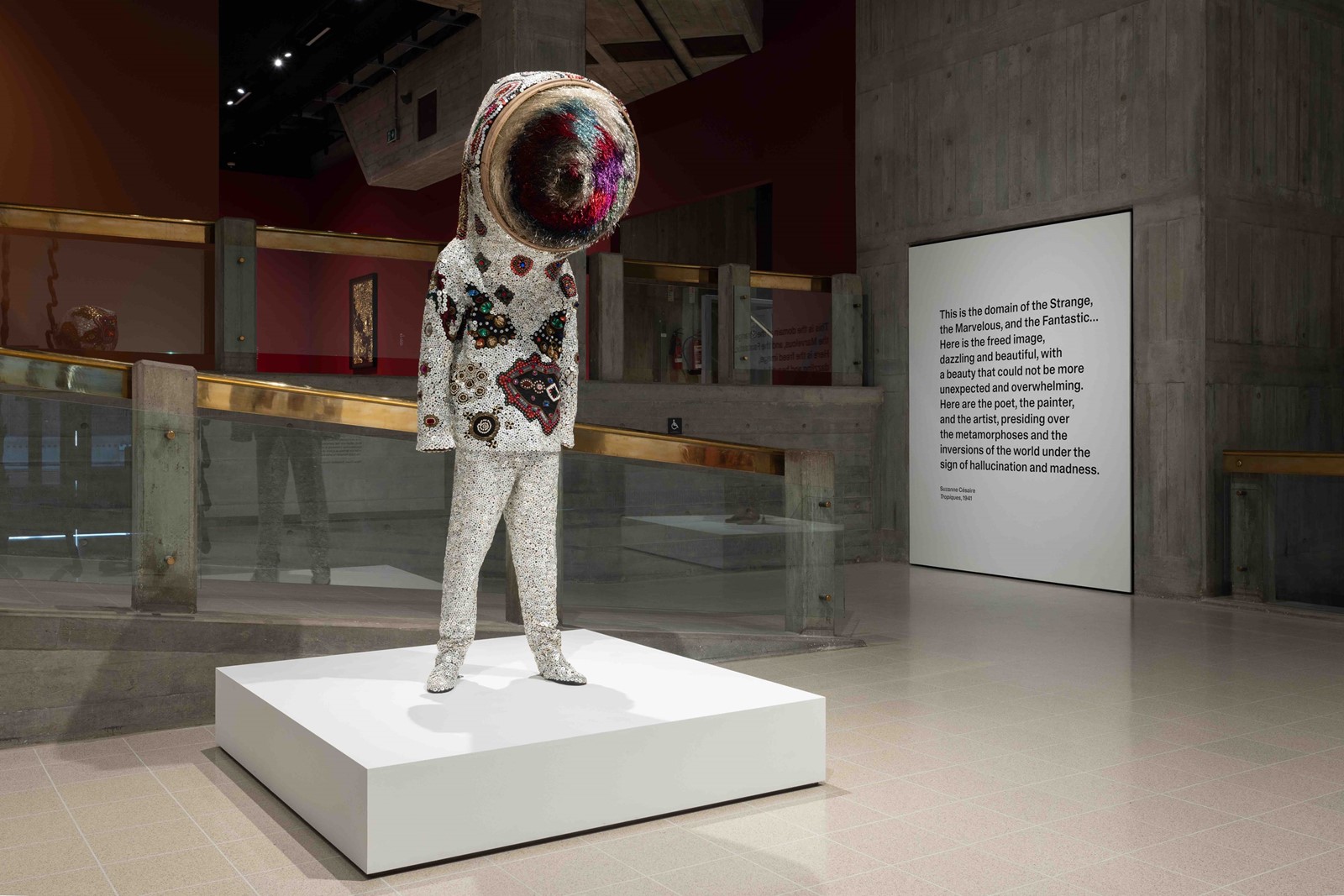
AA: What message do you hope will be taken away from In the Black Fantastic, and what impact do you hope that it will have on art history?
NC: I’m so honoured to be with all of these amazing artists. The extraordinary thing for me is that I’m not even there, yet I feel that I can walk through that show and leave very much in tune with a belief. I’m just excited to be a part of that and to be the introduction to this amazing moment. Ekow, I just want to thank you again. We need these curators of colour to establish a position, and to be the voice to unite us as artists collectively, as we forge forward.
EE: Thank you very much, Nick. I describe the idea of the ‘Black Fantastic’ ultimately as a way of seeing. That’s the thing that hopefully people take away. What happens when you look through the eyes of all the artists in the show? You recognise the world is complex and beautiful and really strange and historically freighted.
Certainly, that’s what I do when I look at a Soundsuit or I’m looking at Chain Reaction. It’s amazing to feel something aesthetically, intellectually and spiritually, in relation to these works. It’s an extraordinary thing to be able to hold space in the way that your works do, Nick.
NC: Thank you.
In the Black Fantastic is on show at the Hayward Gallery until 18 September 2022.
